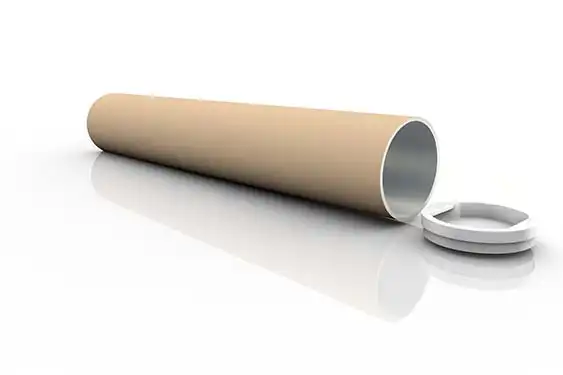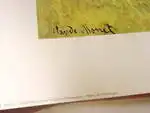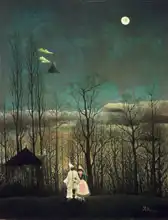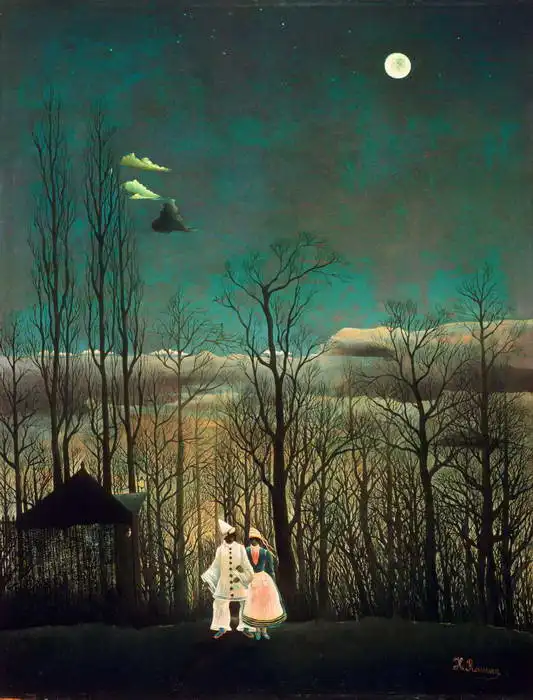About this finishing
Print. The image is printed on the top quality 10-ink HP Z9PS printer on HP matte 270 g / m2 paper. You can choose any size to an accuracy of 1 cm. A margin of 5 cm around the image is added to the size of the motif.


You can find a detailed description about our finishings
here.
Carnival - evening
The painting "Carnival - evening" (French "Carnival Evening") by
Henri Rousseau , also known as Le Douanier Rousseau, is a characteristic example of his naive style of painting, which makes him unique in the history of art. This oil painting was created around 1886 and depicts a night carnival scene.The painting depicts a lively night carnival scene. The characters and the audience are dressed in bold and flashy costumes typical of carnival celebrations. Many characters have masks on their faces. An interesting feature of the painting is the way Rousseau depicted the trees and vegetation at the edge of the scene. The trees are curved and have a shape that resembles the jungle, which was a frequent motif in his paintings. Even though the painting is nocturnal, Rousseau used bright and bold colors and lighting. He lit his characters and costumes in such a way that they attracted the attention of the viewer. Rousseau used flat perspective, a characteristic feature of his style. Characters and objects are depicted on a flat plane, which gives the picture a special fairy-tale and dreamlike character.
Le Douanier Rousseau was known for his naive and stylized approach to painting. His figures have simple shapes and faces with minimal detail. The image evokes the impression of mystery and fairytale. The carnival scene is full of characters who have mysterious and mysterious expressions on their masks. Rousseau often worked with this impression of a dream world in his works.
Prevailing color of this fine art print is dark and its shape is portrait. This image is printed on demand - you can choose material, size and finishing.
Henri Julien Félix Rousseau (1844 - 1910). French
Post-Impressionist painter. He learned painting himself (he developed a specific naive style) and eventually became a brilliant artist whose paintings are firmly embedded in art history. For his profession as a customs officer, he is also called Customs (see his self-portrait known as
Customs). He never left France, but became known for his paintings
Jungle. Contemporaries often mocked him (they reproached him for his children's paintings). Picasso, who by chance saw one of his paintings and appreciated the quality of his work, prepared a banquet in Rousseau’s honour
Dream.


